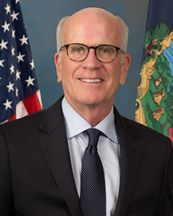0
Ensuring Patient Access and Effective Drug Enforcement Act of 2014
3/14/2024, 12:48 PM
Congressional Summary of HR 4709
Ensuring Patient Access and Effective Drug Enforcement Act of 2014 - Amends the Controlled Substances Act to define: (1) "factors as may be relevant to and consistent with the public health and safety," for purposes of the Attorney General's determination of whether registering an applicant to manufacture or distribute a controlled substance in schedule I or II is in the public interest, as factors that are relevant to and consistent with the findings of such Act; and (2) "imminent danger to the public health or safety," for purposes of the suspension of such a registration, to mean that in the absence of an immediate suspension order, controlled substances will continue to be intentionally diverted outside of legitimate distribution channels or distributed or dispensed outside the usual course of professional practices or in a manner that poses a present or foreseeable risk of serious adverse health consequences or death.
Requires an order to show cause as to why such a registration should not be denied, revoked, or suspended to: (1) contain a statement of the basis for the denial, revocation, or suspension, including specific citations to any laws or regulations alleged to be violated; (2) direct the applicant or registrant to appear before the Attorney General at a specific place and time within 30 days after receipt of the order; and (3) notify the applicant or registrant of the opportunity to submit a corrective action plan on or before such appearance. Requires the Attorney General, upon review of any such plan, to determine whether denial, revocation, or suspension proceedings should be discontinued or deferred for purposes of modifications to such plan. Makes such requirements inapplicable to the issuance of an immediate suspension order.
Directs the Secretary of Health and Human Services (HHS), acting through the Commissioner of Food and Drugs (FDA) and the Director of the Centers for Disease Control and Prevention (CDC), to submit a report identifying: (1) obstacles to legitimate patient access to controlled substances; (2) issues with diversion of controlled substances; and (3) how collaboration between federal, state, local, and tribal law enforcement agencies and the pharmaceutical industry can benefit patients and prevent diversion and abuse of controlled substances.





